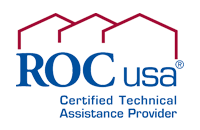
Keep heat in your house and dollars in your wallet
By Kathi Paradis
Owners of even older manufactured homes can take steps to keep more heating dollars in their wallets.
During the unseasonably warm holiday weather here in New Hampshire, it was nice to not worry about how much heating oil, gas or electricity we used to keep our homes warm.
Now we're in the midst of a cold snap, and pulling out hats, scarves and long johns to battle the biting winds. A colleague remarked that, during cold weather, he noticed his house was warmer because his furnace ran nearly continuously. That's true of many older homes, particularly those that lack sufficient insulation.
 When our homes aren't energy-efficient, we can almost see dollar bills flying out the window as the furnace runs.
When our homes aren't energy-efficient, we can almost see dollar bills flying out the window as the furnace runs.
Enter the "new" manufactured home of today. Gone are the days of the rectangular box with single-pane windows, to which you had to attach additional single-pane storm windows every winter.
Advances in construction techniques and building materials, as well as more options available to homebuyers, contribute to attractive, well-built and energy-efficient manufactured homes. Today's new manufactured homes have options for Energy Star-rated appliances; extra insulation in walls, ceilings and floors; and triple-layered water-and-gas-filled windows. High efficiency hot-water heaters and furnaces are also available.
A stop at a manufactured-home dealer will reveal how well-built and affordable these homes are, as well as your choices for custom-designing your new home. Several resident-owned (co-op) communities in N.H. would love to have a new energy-efficient home move in.
Owners of older homes can also take steps to keep more heating dollars in their pockets.
- Check for any spots around doors and windows where you see daylight or feel a cold breeze, no matter how slight. Fill those openings with caulk or spray insulation.
- Install energy-efficient windows and doors. Even doing one room at a time can reduce your energy consumption.
- Install insulated skirting, or repair any broken or missing skirting. We learned in school that hot air rises and cold air, being heavier, sinks. At the ground level, all of that cold air underneath your home makes your floors cold.
- Make sure your furnace is in tip-top running condition by having it cleaned and serviced regularly.
For more resources, check out www.energy.gov or your local utility company or heating fuel supplier.
Kathi Paradis is a Welcome Home Loans Underwriter.
NMLS #469310. Licensed by the New Hampshire Banking Department.















